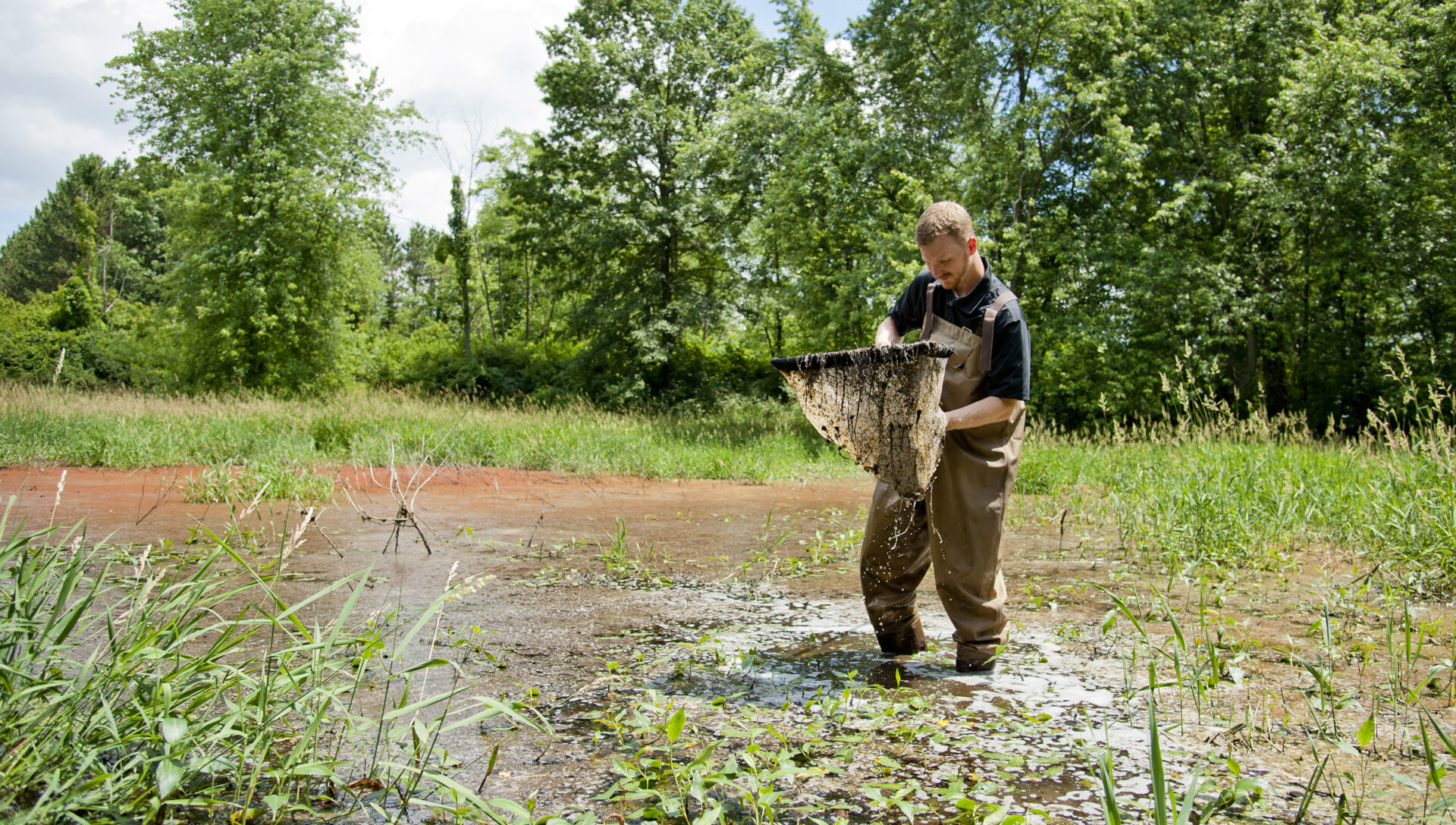


Current disease related projects in the lab include:
1.Exploring the implications of coinfection in amphibian communities with a focus on trematodes, ranaviruses, and the chytrid fungus
2.Examining how priority effects influence disease outcomes associated with coinfection
3.Assessing whether chemical contaminants increase susceptibility to pathogens
4.Exploring drivers of population-level variation in susceptibility to pathogens

Humans are increasingly impacting ecological communities through chemical contamination, habitat destruction, translocation of species, and climate change. The Hoverman Lab examines how anthropogenic chemicals such as pesticides affect aquatic communities. By applying ecological and evolutionary frameworks, our research seeks to identify the mechanisms through which pesticides affect populations, communities and ecosystems. We use a combination of field studies and controlled laboratory and mesocosm experiments to address these goals. Because Purdue is located in the ‘corn belt’ of the midwest, our results have immediate applications to the conservation and management of local biodiversity.
Current ecotoxicology related projects in the lab include:
1.Exploring the influence of neonicotinoids on aquatic communities through the combination of field sampling, LC50/EC50 laboratory tests, and mesocosm experiments
2.Examining the evolutionary implications of pesticide exposure on aquatic species
3.Integrating ecotoxicology and disease ecology to identify the interactive effects of multiple stressors on individuals and populations
4.Developing toxicity reference values for amphibians exposed to perfluoroalkyl and polyfluoroalkyl substances
Insecticides such as malathion are applied to wetlands for mosquito control. We have examined the direct toxic effects of malathion on species within aquatic communities as well as the resulting trophic cascades. The two tanks to above provide a clear example of the impacts that malathion can have on aquatic communities. The top tank is a control that was never exposed to malathion while the bottom tank was exposed to a concentration of malathion commonly found in ponds following application for mosquito control. The differences in water clarity are driven by the direct toxic effects of malathion on zooplankton, a grazer of suspended algae (phytoplankton). The loss of zooplankton from the community initiates a trophic cascade that ultimately reduces the fitness of tadpoles.


The risk of predation is perhaps the most pervasive form of stress in ecological communities and has substantial effects on the ecology and evolution of organisms and their communities. Using freshwater snails and their predators (e.g., crayfish, fish, insects) as a model system, the Hoverman Lab addresses the ecology and evolution of predator-prey interactions (i.e. inducible defenses). We have discovered that snails adaptively respond to the presence of predators by altering a complex suite of traits (i.e. behavior, morphology, life history). Importantly, snails are capable of identifying the specific predator species and their densities in the environment by eavesdropping on the chemical cues released in the predators’ waste products. The ability to detect specific predator species is critical for snails because predators vary in feeding mode. Recently, we documented that functionally different predator species are a major factor maintaining plasticity in defensive traits. While predator-induced defenses have clear advantages for prey, organisms are not infinitely plastic. We have documented that snails lose their ability to respond to environmental variation in predation risk as they age due to developmental constraints associated with shell development. Lastly, predators can impact prey by direct consumption (i.e. reducing their density) or through inducing phenotypic changes (i.e. inducible defenses). These impacts can cascade through larger communities that contain many predator and competitor species. Using a long-term mesocosm experiment, we have examined: 1) the relative importance of cascades that occur via changes in density versus traits (DMII versus TMII) and 2) the temporal dynamics in the magnitude of DMIIs and TMIIs.


The freshwater snail Helisoma trivolvis (below) has been our focal species for research on inducible defenses. In the presence of water bugs (above), snails allocate resources to shell coiling to avoid the piercing mouth part of the insect. This can be seen in the snail on the far left. While this response helps defend the snail against water bugs, the tradeoff is that the shell is initially thinner and more susceptibility to attacks by other predators such as crayfish that crush the shell.



